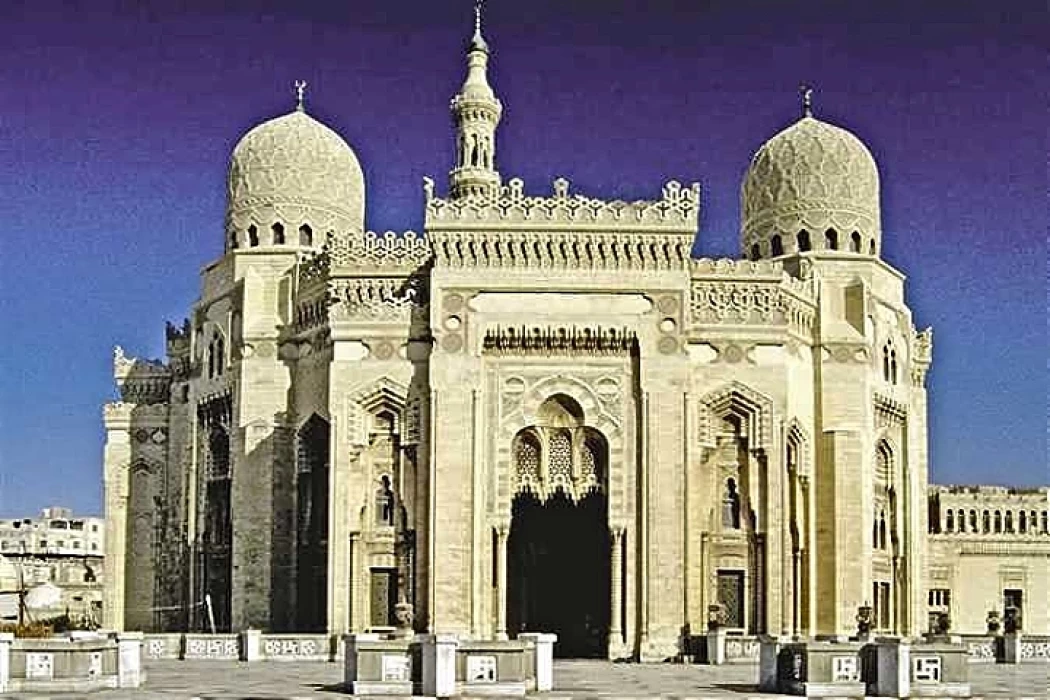
Egypt's Beautiful Mosques: Abu Al-Abbas Al-Mursi
Egypt's Beautiful Mosques
The Abu Al-Abbas Al-Marsi Mosque is located in the Mosques neighborhood in Anfushi, and within the scope of the famous Customs neighborhood, which was once just a tomb in which the saints were buried, and today it has become one of the most famous and important Islamic shrines in Egypt, and receives many visitors from everywhere from inside and outside Egypt, as this mosque is one of the most important reasons that made the bride of the sea a capital of religious tourism.
Eight decades ago, specifically in the year 1219, in one of the houses of the Andalusian city of Murcia, located today in southeastern Spain, overlooking the Mediterranean Sea on the banks of the Shaqura River, Sheikh Shihab al-Din Abu al-Abbas bin Ahmed bin Hassan bin Ali al-Khazraji al-Ansari was born from a family whose lineage extends to the noble Companion Saad bin Obadah al-Ansari, the master of the Khazraj, and his grandfather Qais bin Saad bin Obadah was the Emir over Egypt by our Imam Ali bin Abi Talib in 36 AH.
Abu al-Abbas al-Mursi showed early signs of brilliance, so his father directed him to memorize the Quran and master reading, writing and arithmetic from a young age, and indeed he memorized the entire Quran in one year, and learned the art of dealing, ethics and trade from his older brother Abdullah, but the winds did not come as the ships desire, in 1242 his father decided to go to the Hajj, taking with him Shihab and his brother and mother, to sink the ship off the Tunisian coast, so the father and mother died, and he and his brother survived, so they decided to settle in Tunis to work in commerce.
One day in 1242 AD, he met the great Sheikh Taqi al-Din Abul Hasan al-Shadhili, the leader of the Shadhiliya and Sufi order, and learned from his knowledge and accompanied him everywhere, the city of Alexandria was at that time a land to attract scholars from Andalusia and the Maghreb countries, and when “Abul Hasan al-Shadhili” decided to come to Egypt in 1244 Abu al-Abbas al-Mursi took with him, and they settled in the Mediterranean bride for four decades, and he gained the status of his teacher Sheikh al-Shadhli after his death, and continued his path in spreading religious and worldly sciences among the people, and receiving visitors from various types of societies from rich, poor, scholars, and princes from all countries.
In the year 1281 Anno Domini, Abu al-Abbas al-Mursi breathed his last, and his body found a resting place in a small graveyard located in the eastern port of Alexandria or Bab al-Bahr region, without a mosque or shrine built over it, until the year 1307, until the chief merchant in Alexandria, Sheikh Zayn al-Din al-Qattan, who decided to build a shrine and a small mosque, and even made a square lighthouse for it, and set aside some money to serve him, so that the initial building block of that most important and famous mosque in Alexandria began.
The first building block of this most important and most famous mosque in Alexandria, and whenever it was neglected, it finds those who pay attention to it and restore and rebuild it, as did the Prince of Alexandria, Fujmash Al-Isaac Al-Zahir in 1477, who rebuilt it, and in 1863 it was restored and expanded little by little by order of the Sheikh of the Builders' Sect.
In 1934, King Fouad I ordered the construction of a mosque square with a capacity of about 3,200 square meters, to include the mosque of Imam al-Busairi and Sheikh Yakut al-Arash, with the Abu al-Abbas al-Mursi mosque in the middle. This project was carried out by an Italian architect named “Mario Rossi”, who came to Egypt as a young man in his mid-20s and was working in the Egyptian Ministry of Works and supervising the royal palaces.














